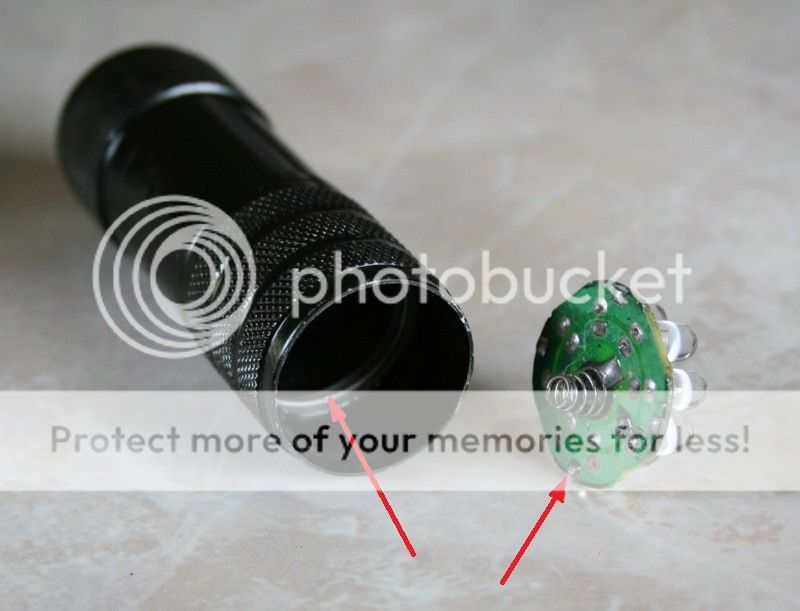DennisMenace
Newly Enlightened
- Joined
- Mar 25, 2007
- Messages
- 8
I use inexpensive LED flashlights at work. They get beat up and destroyed and lost in action (read stolen). Expensive lights would be inappropriate, so i'm trying to make the cheap ones work.
The circuit board makes contact with the aluminum tube at 4 spots. These contact points occasionally corrode and become resistive. It seems that lead and aluminum naturally corrode when in contact with each other. (galvanic reaction?)

I use a wire brush on a dremel to clean them and apply no-ox to slow the oxidation rate.
My question (finally) is: How do expensive lights make trouble-free connection between the circuit board and the tube?
Thanks!
The circuit board makes contact with the aluminum tube at 4 spots. These contact points occasionally corrode and become resistive. It seems that lead and aluminum naturally corrode when in contact with each other. (galvanic reaction?)

I use a wire brush on a dremel to clean them and apply no-ox to slow the oxidation rate.
My question (finally) is: How do expensive lights make trouble-free connection between the circuit board and the tube?
Thanks!


 but better... I'd recommend Convoy lights if ~20 US$ is within your budget.
but better... I'd recommend Convoy lights if ~20 US$ is within your budget.